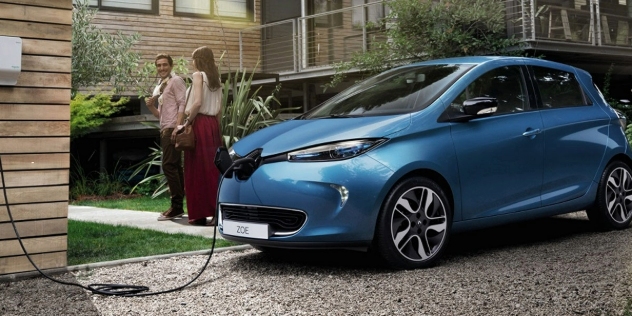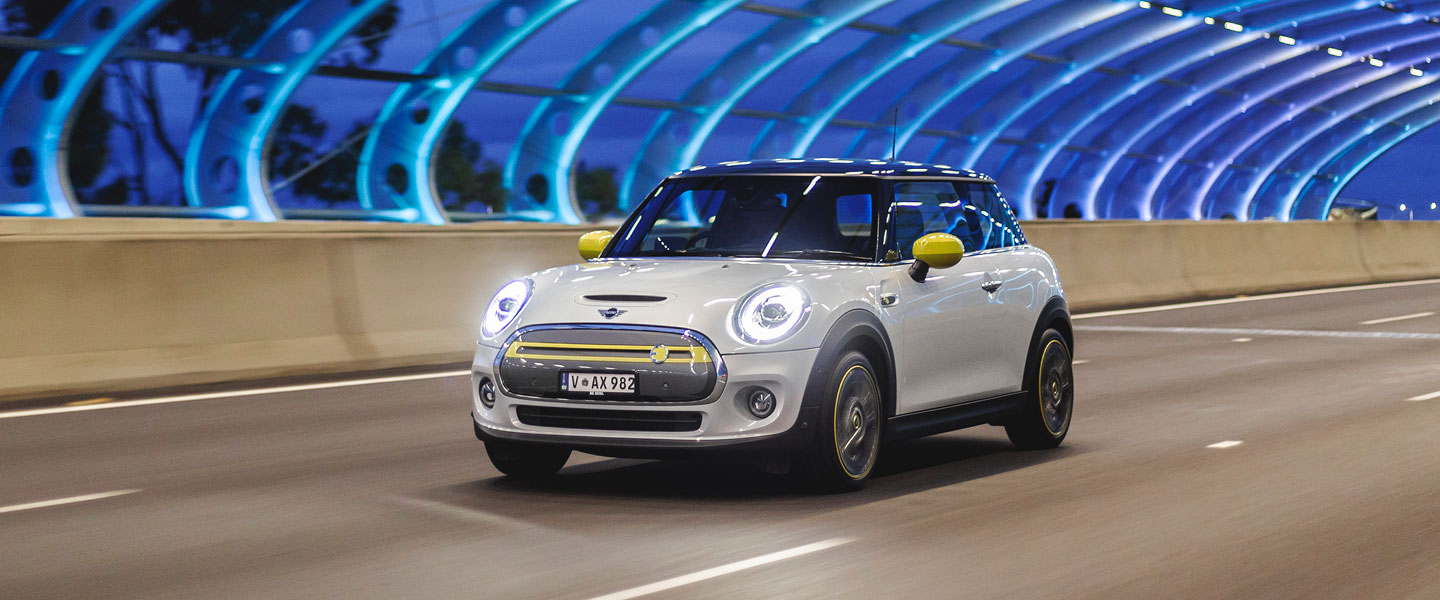The best small EVs on the market today

The cost of living is on the increase, and transport now accounts for an average 16 per cent of the family budget. Commuters are opting for cheaper types of transport, but e-bikes and e-scooters are under scrutiny due to battery fires.
Small EVs offer an affordable alternative for those counting the pennies, without the worry of battery safety – just seven electric car fires have ever occurred in Australia and are far less common than their two-wheeled alternative, thanks to strict standards.
Small EVs also have a considerably smaller environmental impact compared to larger electric vehicles. As they have smaller batteries, they require fewer resources.
The trade-off, of course, is range: small EVs may not be up to the bigger jobs of SUVs and utes, but are more than suitable for work commutes, school drop offs, grocery shops and more. They’re easier to park and cost less to power overall.
Many of the ones in our list below are also available as second-hand EVs. So, what small electric vehicles are available in Australia, and where can you buy them?

Renault Zoe
Renault sold the all-electric Zoe hatchback in Australia from 2017 before pulling it from the market in 2020. It has since been discontinued, making way for the next generation Zoe E-Tech.
There is no ETA on the new Zoe yet, but those keen on getting into the affordable end of the EV market can bargain with a pre-loved Zoe.
Originally priced from just under the $50,000 mark, you can now expect to pay as little as $15,000 and up to $25,000 for this pint-sized hatchback.
The Zoe is 4085mm in length - about half a metre shorter than the Nissan Leaf - and 1730mm in width. Performance-wise, it delivers a modest 68kW of power and 220Nm of torque, with a top speed of 135km/hr.
When new, the Zoe offered a respectable range of 300-390 kilometres (WLTP) on a single charge – expect a pre-loved model to deliver less. Battery capacity is 41kWh or 50kWh, denoted by ZE40 or ZE50.
What to watch out for: Note, the ZE40 is not capable of DC charging, but can reach 100 per cent via 32-amp three-phase power in three hours, or 7-8 hours on 32-amp single-phase power, providing owners with alternative charging options. The ZE50 also offers 50kW DC fast charging from 10-80 per cent in under an hour and a more powerful 100kW motor.
Small EVs offer affordable and eco-friendly transport options for those counting the pennies
— Bridie Schmidt
Mitsubishi i-Miev and i-Miev Minicab
The Mitsubishi i-Miev and its Minicab stablemate were some of the first EVs to hit the Australian market. Redbook lists models from 2010-2012 with resale values as low as $4,300 for those sold privately with high mileage.
With a 150-kilometre range when new from its 16kWh battery, these vehicles are suited for short, daily commutes. Charging times are reasonable, with a 4 hours 45 minutes AC charge time, and reaching 80% charge on DC power takes just 24 minutes.
Their compact dimensions, with a length of 3475mm and width of 1475mm, make them ideal for tight urban spaces. The power output is modest at 47 kW and 197 Nm of torque, achieving a top speed of 130 km/hr.
What to watch out for: Some second-hand i-Mievs have been given a second life with new larger batteries; asking prices of up to $25,000 can be found for those with a replacement 30kWh battery, increasing the driving range to as much as 240km. Also be aware of models with the original on-board charger, which was prone to failure.


Nissan Sakura
The diminutive Nissan Sakura “kei car” has been a favourite in its home country of Japan but Nissan has never offered it new here in Australia.
It is now available through the Specialist and Enthusiast Vehicles (SEV) register and the first one offered for sale by Good Car Co in January 2024 was snapped up in days after it was advertised for $36,000.
It enters the market as a cute, efficient EV option, boasting a range of 180km when new from its 20kWh battery pack.
The Sakura's petite dimensions of 3395mm in length and 1475mm in width make it a nimble contender for urban commuting. It offers a power output of 47kW and 195Nm of torque, with a top speed akin to its Mitsubishi cousins at 130km/hr.
What to watch out for: As the Sakura is a grey import from Japan, seek out parallel, or “grey”, import dealers to enquire about import processes. Also, ask about battery warranty and whether a language conversion pack is available.

Fiat 500e and Abarth 500e
Although most small EVs in this list are available under the $30,000 mark, the Fiat 500e and Abarth 500e are definite exceptions - at least for now, until they eventually enter the growing second-hand EV market.
The Fiat 500e oozes Italian retro cool and arrived on Australian roads in late 2023. Fans of the brand will appreciate its urban nous and more-than-decent performance for city streets.
Available in one La Prima grade from $52,500 before on-roads, the 500e measures 3660mm in length and 1627mm in width, offering a comfortable and stylish interior within a compact exterior.
The 500e provides 252-kilometre WLTP range, powered by a 42kWh battery. Power and torque are quite generous for its size, at 87kW and 220Nm respectively, and it can reach a top speed of 150 km/hr.
The Abarth 500e takes the charismatic Fiat 500e and infuses it with spicy attitude. Available in two trims and priced from $58,900-$60,500 before on-roads, the Abarth 500e is for those seeking a more spirited and agile drive within the confines of an urban-friendly package.
It shares the same 252km range and 42kWh battery, but distinguishes itself with enhanced performance figures, delivering 114kW of power and 235Nm of torque. This allows the Abarth to reach a top speed of 155km/hr.
Charging speed for both is on par with its class, with a full recharge taking four hours or a quick boost to 80 per cent in 25 minutes with DC charging.
What to watch out for: The Fiat 500e falls short of a full five-star safety rating from ANCAP. It gained four stars based on 2021 testing of its non-electric stablemate and lacks autonomous emergency braking (AEB) when reversing to minimise risk to pedestrians. It also scored zero for AEB when turning corners. The Abarth 500e has no official safety rating but shares the same safety equipment as the Fiat.

Mini Electric Hatch
Last but by no means least, the Mini Electric Hatch, aka Cooper SE, is a blend of iconic design and electric efficiency. The new 2024 Cooper SE arrives in the second half of the year but in the meantime its predecessor saw a $20,000 price drop in late 2023 as BMW looked to clear the showroom floors.
As a result, there are now good deals on this compact British powerhouse. The Mini Electric Hatch is available both new and used, with secondhand prices on starting from as little as $25,000 for a 2020 edition.

The Mini Electric Cooper Hatch offers a range of 222 to 250kms, depending on the battery size, which varies from 33 to 54 kWh.
It requires a longer charge time of 5 hours 15 minutes on AC power or 29 minutes for an 80% charge on DC power. The Mini's dimensions make it a comfortable city car, with a length of 3900mm and width of 1750mm.
It boasts the most robust power figures in this lineup, with 160 kW and 330 Nm of torque, propelling it with characteristic Mini style and handling to a top speed of 170km/hr.
What to watch out for: The new 2024 Mini will be available in both an 135kW E and slightly more powerful 160kW SE variant. The battery sizes are bigger (40.7kWh and 54.2kWh respectively) and thus offer more range (300km and 400km), whereas the pre-2024 year model realistically gets around 200km.
Comparing small EVs available in Australia
|
Model |
Renault Zoe |
Mitsubishi i-Miev and Minicab |
Nissan Sakura |
Fiat 500e |
Abarth 500e |
Mini Electric Hatch |
|
Price Range* |
$14,700 - $25,300 (used) |
$12,500 - $26,000 (used) |
$36,000 (import) |
$52,500 before on-roads |
$58,900 - $60,500 before on-roads |
$24,850 - $57,250 (used) |
|
Model Year |
2017-2019 |
2010-2012 |
Current |
Current |
Current |
2023 |
|
Available |
Used |
Used |
SEVs |
New |
New |
Used |
|
Range (new, km) |
300-390 |
150 |
180 |
252 |
252 |
222 |
|
Battery (kWh) |
41-50 |
16 |
20 |
42 |
42 |
33 |
|
Charge Time (AC 0-100%/DC 10-80%) |
3 hrs / 56 min (ZE50 only) |
4 hrs 45 min / 24 min |
|
4 hrs / 25 min |
4 hrs 15 min / 25 min |
5 hrs 15 min / 29 min |
|
Length (mm) |
4085 |
3475 |
3395 |
3660 |
3660 |
3900 |
|
Width (mm) |
1730 |
1475 |
1475 |
1627 |
1627 |
1750 |
|
Power/ |
68-100/220 |
47/197 |
47/195 |
87/220 |
114/235 |
135/270 |
|
Top Speed (km/hr) |
135 |
130 |
130 |
150 |
155 |
170 |
*Private used car resale values from Redbook


